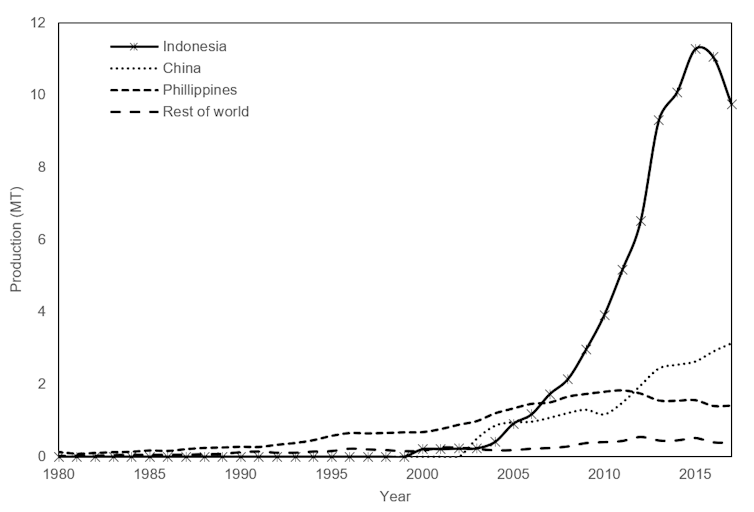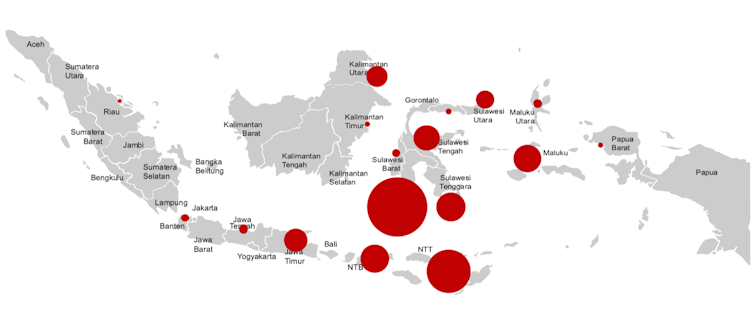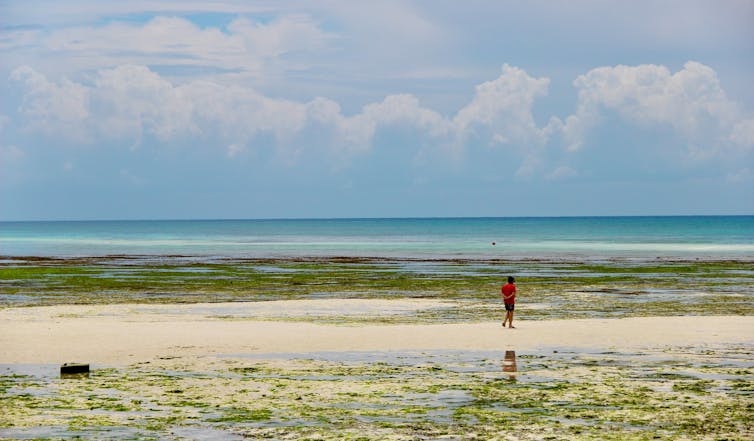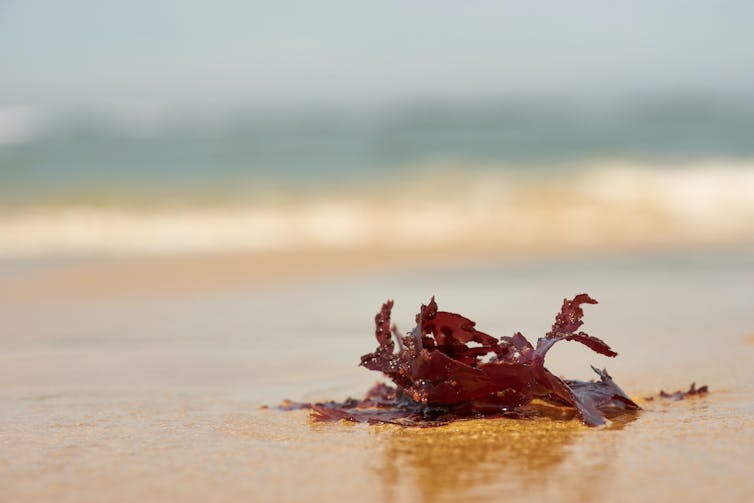This article is published for World Fisheries Day which falls on November 21
Indonesia is the world’s largest producer of the gel-containing seaweeds known as hydrocolloid seaweeds.
Unlike food seaweeds, produced mainly in China, South Korea, North Korea and Japan, hydrocolloid seaweeds are used to extract gels used in a range of applications, including as a thickener in food processing and as a biomaterial for pharmaceutical applications.

In 2017, Indonesia produced 66% of the world’s hydrocolloid seaweeds. South Sulawesi province is the country’s largest seaweed producing region, contributing more than a fifth of the global supply of hydrocolloid seaweeds.

Indonesia’s dominant role in the global hydrocolloid seaweed market is a result of its tropical climate and extensive coastline.
In addition, our recent research reveals that the success of Indonesia’s seaweed industry is also closely linked to Indonesian seaweed farmers’ ability to manage extreme seasonal variations in seaweed growth rates.
Research findings
Our research using satellite data of the Pangkep mainland coastline in South Sulawesi from 2017-2020 shows that more than half of the annual production of seaweed occurs in just three months of the year.
In 2018, more than 90% of production occurred in the first six months of the year, and harvests in good seasons are typically four times higher than in bad seasons.

This means that seaweed farmers need to be highly flexible in order to work around changing ocean conditions throughout the year.
Seaweed needs to be tied onto ropes and hung in the ocean for at least six weeks while it grows. During this time, farmers need to clean the seaweed to remove other types of algae and to make sure it is not being eaten by other sea life.
Farmers typically spend a few hours each day tending seaweed farms, with timing depending on tides.
Because the seaweed industry is extremely seasonal (with major differences between the rainy and dry seasons), seaweed farmers need to be able to monitor the ocean environment and respond to changes by increasing or decreasing their seaweed cultivation.
The ability to do this, combined with the low cost to enter into seaweed farming, makes Indonesian farmers highly competitive in the global hydrocolloid seaweed market.

Overcoming challenges
Seaweed farming in Indonesia is not, however, an easy way to make a living.
Farmers often have trouble drying their seaweed, particularly when it rains. Since the seaweed quality (and price) is closely related to the moisture content and the presence of contaminants, poor drying equipment and techniques can substantially reduce the quality of the seaweed.
In addition, weather conditions affect seaweed growth and disease can decimate production.
Farmers also face issues maintaining the genetic quality of their seaweed farms beyond a few seasons.
Even if farmers can produce high-quality seaweed, they often do not receive an equivalent high price. The current rudimentary seaweed marketing system often mixes higher with lower quality seaweeds, which are sold as mixed average prices. In a downward tending cycle, this puts downward pressure on incentives for farmers to produce the higher quality seaweed demanded by processors.

Despite these challenges, the seaweed industry has high potential.
Seaweed farmers often report a range of benefits from seaweed farming associated with their ability to earn higher incomes than from other livelihood activities. These include improved nutrition, access to education, and increased ability to purchase household goods.
Farmers have made substantial improvements in seaweed farming technologies by adapting to grow seaweed in deeper waters and, in Indonesia, finding more efficient ways to attach seaweed cuttings to ropes.
However, further developments in technology and marketing are needed to assist seaweed farmers in earning higher and more stable incomes.
Recommendations
To upgrade the Indonesian seaweed industry, it will be necessary to develop a marketing system that can manage risks and transmit price-grade differentials, including through standards, testing, enforcement and closer linkages between farmers, traders and processors.
Improving the quality of the gel products produced by investing in new technologies can add value to the seaweed processing sector. This requires substantial research and development, and foreign investment is one way to access the necessary technology.

Another approach favoured by policy-makers is to develop other products from seaweed, such as foods, fertilisers, pharmaceuticals and lower cost fuels.
This could include bringing new types of seaweed into production and would give farmers more options on what to grow. It could also help diversify the range of products from species currently in cultivation, potentially increasing the price and improving the resilience of the industry to global economic shocks such as the COVID-19 crisis.
Developing new seaweed products will require sustained investment in research and development. Realising the benefits of technological advances will require that farmers are supported to meet the demands of new value chains which promise higher prices for Indonesian farmers.
Our interdisciplinary research project in the Partnership for Australia-Indonesia Research focuses on improving the outcomes of the Indonesian seaweed industry with a particular focus on South Sulawesi. At the first PAIR Digital Summit across the next two weeks, we will discuss seaweed’s valuable role in South Sulawesi’s economy and community. To learn more about this and the work of Indonesian and Australian research teams on youth and the new rail line, you can read more details and register here.


